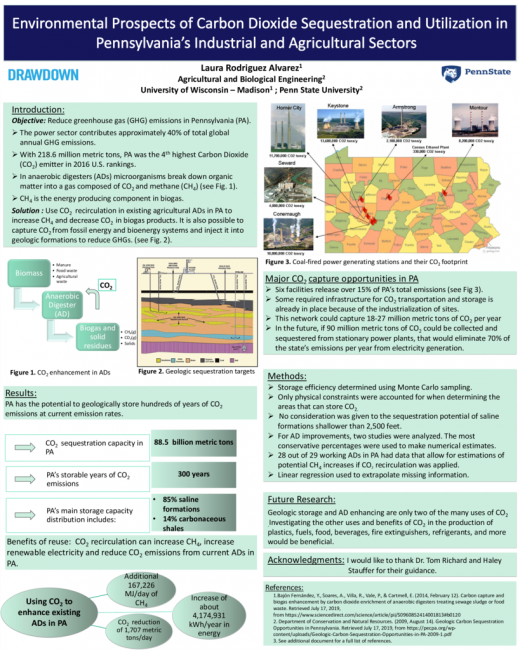To achieve future climate goals, reducing carbon dioxide (CO 2 ) levels in the atmosphere is imperative as this greenhouse gas (GHG) amplifies and accelerates global warming, causing disruption in all ecosystems. According to Project Drawdown, the power sector is the largest emitter of GHGs, contributing approximately 40% of total annual GHG emissions. CO 2 enhancement of anaerobic digesters (ADs) and geologic sequestration of CO 2 are innovative technologies capable of reducing GHGs within this sector. Optimizing ADs using CO 2 enhancement involves inputting CO 2 into the initial AD phase in order to maximize methane production. This could decrease CO 2 emissions by 3-8% and increase biomethane production by 11-96% depending on the digester feedstock. This study analyzed agricultural ADs in Pennsylvania (PA), finding that CO 2 in biogas can be re-looped into ADs to create more methane, enabling an increase of about 4,174,931 kWh/year in renewable energy production with a CO 2 reduction of 1,707 metric tons/day. Geologic sequestration of this gas was also analyzed in PA; examining the potential to store CO 2 in places such as saline formations, oil and gas reservoirs and unmineable coal areas. Through the Department of Conservation and Natural Resources, it was found that CO 2 sequestration can permit PA to store 88.5 billion metric tons of CO 2 /year, equivalent to 300 years of the state’s total emissions. As this process is costly, a feasible way to implement this technology involved locating areas that presently have transportation and storage systems. Ultimately, CO 2 enhancement and geologic sequestration are valuable resources in drawing down GHG emissions.
Day
Monday Poster Session
Related Conference Themes
Electricity Generation


